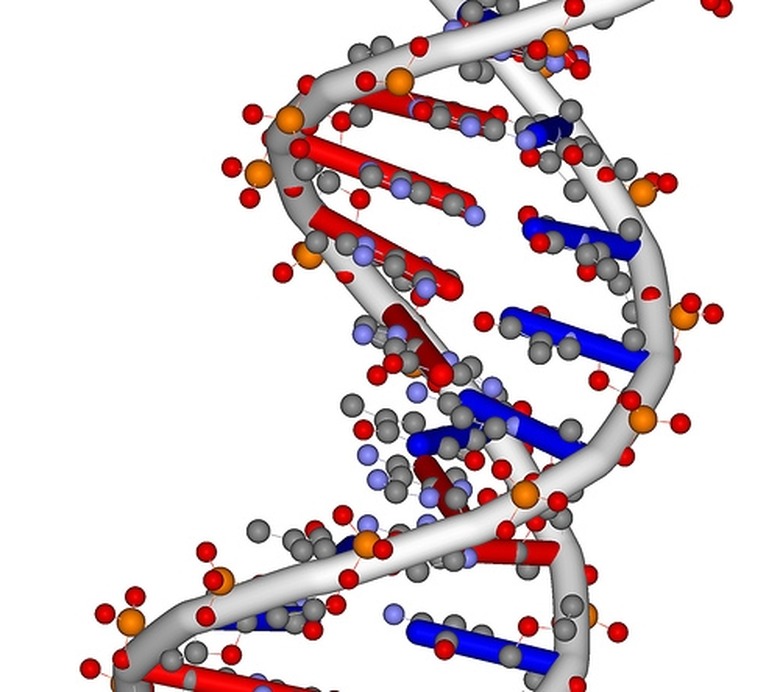Nucleic Acid Functions
Nucleic acids are molecules that store and transmit hereditary information and energy in living things. They are believed to be the first biomolecules to support life as it is typically defined.
In 1953, a team including James Watson, Francis Crick and Rosalind Franklin accurately described the structure of DNA, or deoxyribonucleic acid. They knew its three-dimensional form resembled a double helix, and at least as importantly, they understood that DNA contains the genetic code, or "blueprint," for all organisms (some viruses excepted, and not all scientists accept that viruses are in fact alive).
Basic Characteristics of Nucleic Acids
Basic Characteristics of Nucleic Acids
Nucleic acids consist of a series of linked nucleotides. Each nucleotide, in turn, is composed of three distinct elements: a five-carbon ribose sugar, a phosphate group and a nitrogenous base. There are five types of nitrogenous bases in nucleic acids: adenine (A), cytosine (C), guanine (G), thymine (T) and uracil (U).
The phosphate groups serve as links between the sugars in each strand of DNA. The sugars are also bound to a nitrogenous base. These nitrogenous bases bond to each other in specific combinations to form the "rungs" of the DNA ladder in its unwound form.
Examples of Nucleic Acids
Examples of Nucleic Acids
Only two nucleic acids are believed to exist in nature: DNA and RNA, or ribonucleic acid. The main differences between the two is that, while DNA includes the bases A, C, G and T, RNA includes A, C, G and U. A binds to – and only to – T in DNA, but it binds to only U in RNA. C binds to only G.
In addition, the sugar in DNA is deoxyribose and that in RNA is ribose; the latter contains one more oxygen atom but is otherwise structurally identical. RNA, unlike DNA, usually but not always exists in a single-stranded form.
Function of Nucleic Acids
Function of Nucleic Acids
Broadly speaking, DNA stores information, while RNA transfers information. You might thus think of DNA as a computer hard drive or set of files, and RNA as a flash drive or jump drive.
RNA can serve as a messenger to build proteins using information coded by DNA, migrating from the nucleus where DNA "lives" to other parts of the cell to carry this out. This is, fittingly, mRNA (m stands for "messenger"). A different kind of RNA, transfer RNA (tRNA) helps in the assembly process of proteins from amino acids, and ribosomal RNA (rRNA) makes up most of the organelles called ribosomes, which also participate in protein synthesis.
Many single-stranded RNA molecules form three-dimensional structures that include weak hydrogen bonds between nucleotides. As with proteins, the three-dimensional structure of an RNA molecule specifies a unique function in cells, including the degradation of enzymes.
Cite This Article
MLA
Beck, Kevin. "Nucleic Acid Functions" sciencing.com, https://www.sciencing.com/nucleic-acid-functions-5451993/. 30 July 2018.
APA
Beck, Kevin. (2018, July 30). Nucleic Acid Functions. sciencing.com. Retrieved from https://www.sciencing.com/nucleic-acid-functions-5451993/
Chicago
Beck, Kevin. Nucleic Acid Functions last modified March 24, 2022. https://www.sciencing.com/nucleic-acid-functions-5451993/
